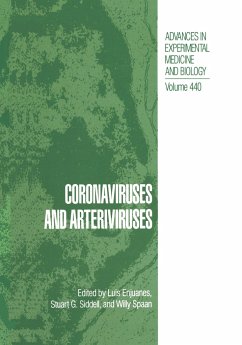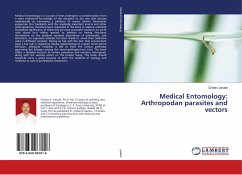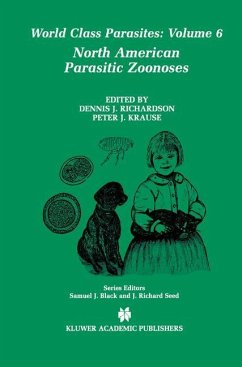
Advances in Disease Vector Research
Versandkostenfrei!
Versandfertig in 1-2 Wochen
39,99 €
inkl. MwSt.

PAYBACK Punkte
20 °P sammeln!
We open Volume 7 with a series of four chapters on plant virus transmission by insects. In Chapter 1, Karen Gibb and John Randles present preliminary information about an association between the plant bug Cyrtopeitis nicotianae (Heteroptera: Miridae) and velvet tobacco mottle virus (VTMo V): the only reported instance of mirid transmission of a known virus. Mirids could be considered as likely vectors of plant viruses because they are phytophagous, possess a piercing-sucking-feeding apparatus, have winged adults, and are cosmopolitan pests of a wide range of crops. Surprisingly, however, there...
We open Volume 7 with a series of four chapters on plant virus transmission by insects. In Chapter 1, Karen Gibb and John Randles present preliminary information about an association between the plant bug Cyrtopeitis nicotianae (Heteroptera: Miridae) and velvet tobacco mottle virus (VTMo V): the only reported instance of mirid transmission of a known virus. Mirids could be considered as likely vectors of plant viruses because they are phytophagous, possess a piercing-sucking-feeding apparatus, have winged adults, and are cosmopolitan pests of a wide range of crops. Surprisingly, however, there are only three plant viruses purportedly transmitted by heteropterous vectors, compared with the nearly 250 by homopterous ones. To what extent these figures reflect actual differences in the abilities of members of the two suborders to transmit plant pathogens remains to be determined. Compared with the Homop tera, the Heteroptera have been ignored by researchers as potential vectors of plant viruses. The authors are quick to point out that additional studies are needed before generalizations can be made about virus-mirid-plant interactions and that virus transmission by mirids is not easily characterized using the conventional transmission criteria and terminology established for such homopterous vectors as aphids and leafhoppers. Transmission of VTMoV by C. nicotianae appears to have characteristics in common with both nonpersistent noncirculative and circulative (persistent) transmission.














